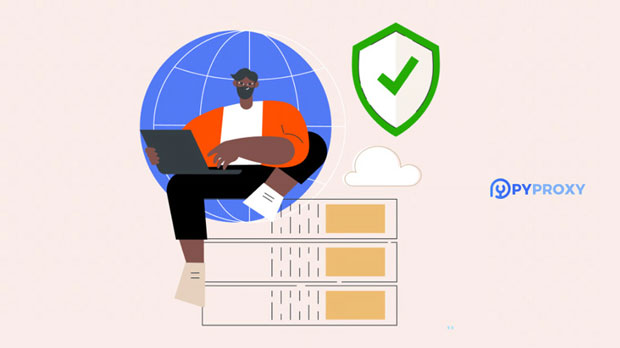When using free proxy services, encountering connection issues is a common problem. Free proxies often come with limitations such as slow speeds, unreliable connections, or even security risks. If you find that your free proxy isn’t working or not connecting, it's essential to understand why this is happening and explore alternative solutions. This article will discuss the potential causes of free proxy connection failures and offer practical alternatives to ensure uninterrupted browsing and enhanced security. Why Free Proxies Fail to Connect?The first step in solving the issue is understanding why free proxies often fail to connect. Free proxy servers are widely used, but they come with several inherent problems that may affect your experience.1. Overloaded ServersOne of the main reasons free proxies fail to connect is the overload of servers. These services are typically available to a large number of users without any control over the number of people accessing them. As more and more users try to connect to the same server, it becomes overwhelmed, leading to slow speeds or complete disconnection. This congestion makes the proxy unable to handle multiple requests at once, resulting in failed connections.2. Limited BandwidthFree proxies usually come with limited bandwidth, which means they cannot support high data transfers. This bandwidth restriction causes problems when trying to access content that requires more bandwidth, such as streaming videos or large file downloads. If you're trying to use a free proxy to access media-heavy websites, your connection may fail due to insufficient bandwidth.3. Security Risks and CensorshipSecurity concerns also play a significant role in free proxy failures. Many free proxies do not offer robust encryption, which means your data can be intercepted and exposed to third parties. Moreover, some websites may actively block known free proxy ip addresses, further limiting access to certain content. This censorship combined with the lack of encryption leaves users vulnerable to hacking and identity theft.4. Proxy Server MaintenanceAnother common cause for connection issues is the regular maintenance and downtime of free proxy servers. Since these services are not commercially supported, the proxy server may be temporarily offline or undergoing maintenance without prior notice. This can disrupt users' connection attempts, leading to frustration and prolonged downtime.What Are the Alternative Solutions to Free Proxy Issues?Given the limitations and connection issues of free proxies, it is important to consider alternative solutions that offer more reliability, security, and speed.1. Paid Proxy ServicesThe most straightforward and reliable alternative to free proxies is to switch to a paid proxy service. Paid proxies are specifically designed to offer better performance, speed, and security. They come with high-quality servers that have significantly more bandwidth and lower user congestion, ensuring faster and more stable connections. Additionally, these services often offer better encryption, reducing the risks of data breaches.Paid proxy services come in various types, including residential proxies, data center proxies, and mobile proxies. Each of these types has its advantages, depending on your specific needs. For example, residential proxies are excellent for accessing location-specific content, while data center proxies offer high speeds for large-scale scraping tasks.2. Virtual Private Network (VPN)Another excellent alternative to using free proxies is subscribing to a Virtual Private Network (VPN). A VPN routes your internet traffic through a private server, ensuring that your online activities remain encrypted and secure. Unlike free proxies, VPNs offer higher security and faster speeds, as they typically have fewer users sharing the same server.VPNs also provide additional benefits such as hiding your IP address, bypassing geographic restrictions, and maintaining anonymity online. Many paid VPN services offer unlimited bandwidth and 24/7 customer support, providing a better overall browsing experience compared to free proxies.3. Tor NetworkIf privacy is your primary concern, you might consider using the Tor network. Tor is a free, open-source system that allows you to browse the web anonymously. It works by routing your internet traffic through multiple volunteer-run nodes, making it incredibly difficult for anyone to trace your online activities.While Tor provides high levels of anonymity, it may not be suitable for activities requiring high-speed internet, such as streaming or downloading large files, as it can significantly slow down your connection. However, for users looking for maximum privacy, Tor remains one of the best free alternatives to free proxies.4. Browser-Based Proxy ExtensionsFor light proxy use, browser-based proxy extensions can be an ideal alternative. Extensions like those available for Google Chrome or Mozilla Firefox provide quick and easy ways to route your internet traffic through a proxy server directly from your browser. These extensions can offer more convenience than traditional proxies, as they are lightweight and do not require installation of complex software.Some extensions also include built-in encryption and security features, making them a better option than free proxies. However, like free proxies, some extensions may have speed or connection issues, so it's essential to choose reliable and reputable ones.5. Cloud-Based ProxiesCloud-based proxies have gained popularity as a robust alternative to traditional proxies. These proxies are hosted on cloud infrastructure, offering greater scalability, better speed, and higher uptime than typical free proxies. Cloud providers like AWS and Google Cloud offer proxy services that are reliable and secure. You can configure these proxies based on your needs, and they often come with support and robust infrastructure, making them more reliable than free options.While cloud-based proxies typically involve some cost, they can be worth the investment for businesses or individuals requiring high performance and security. Additionally, they offer greater control over the proxy setup, allowing users to tailor configurations to specific needs.Conclusion: Choosing the Best SolutionWhile free proxies may seem like a cost-effective solution for anonymous browsing or bypassing geographical restrictions, their inherent limitations often lead to connection failures, slow speeds, and security risks. When free proxies fail, alternatives such as paid proxy services, VPNs, the Tor network, browser-based proxy extensions, and cloud-based proxies provide better performance, security, and reliability.Choosing the right alternative depends on your specific needs, whether it's anonymity, speed, or ease of use. While free proxies may serve their purpose in certain cases, investing in a paid service can significantly improve your online experience. For users who prioritize security and privacy, using a VPN or the Tor network may be the best option.By understanding the limitations of free proxies and exploring these alternative solutions, you can ensure a smoother, more secure browsing experience that meets your needs.
Apr 23, 2025
![arrow]()



























































